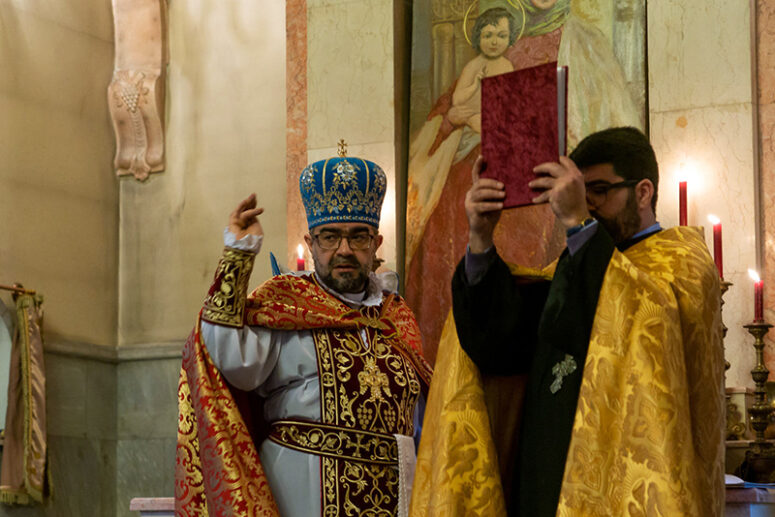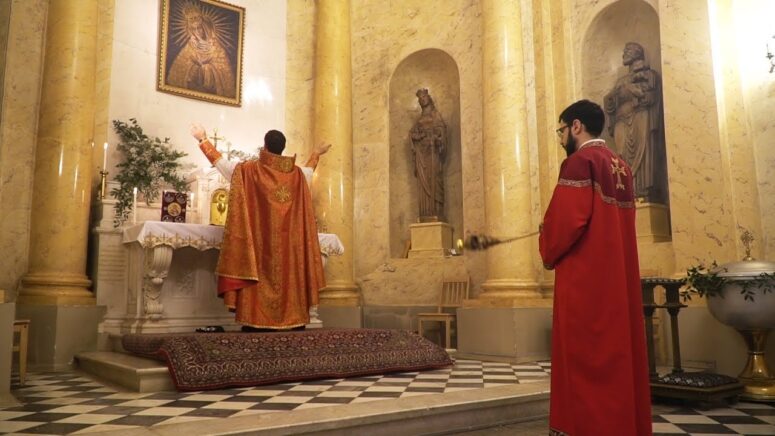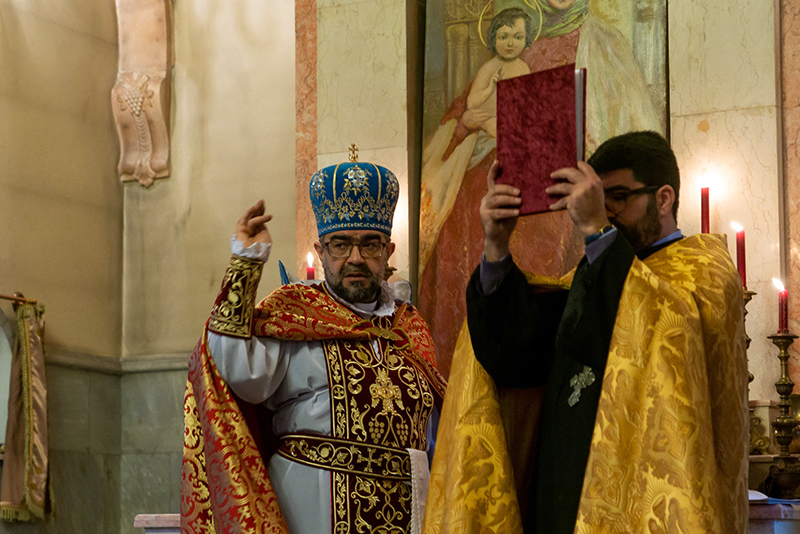
The church continues her Lenten journey to the New Passover of Christ giving this week special attention to the Holy Cross of the Lord and placing it in the center of worship. Christians have venerated the Cross making images of it and blessing themselves with the sign of it since ancient times. What traditions of making the sign of the cross exist among Christians? What symbolic significance do they carry? We have already described the traditions of the Orthodox, Catholic and the Ethiopian Churches and now we would like to describe the practices of other Christians.
Assyrian Church of the East
It should be noted right away that in this tradition the sign of the cross is considered one of the church sacraments. This is argued by the fact that Christ died on the Cross for our salvation and that any other sacrament of the church is “sealed” with the sign of the cross. Assyrian Christians have venerated icons of Christ and saints for centuries. However, possibly due to being surrounded by a purely Muslim environment, the use of icons, especially in the liturgical space, has gradually faded away among Christians of this denomination, currently limiting it to portraying and venerating the image of the Cross without the Crucifixion.
In contrast with Catholics, Armenians and members of the pre-Chalcedonian churches, Christians of the Assyrian Church adhere to the Orthodox practice of making the sign of the cross from right to left. Comparing the Jacobite and Melkite practices of making the sign of the cross, bishop of the Assyrian Church Elijah Geveri ( † not earlier than 905) testified that in his time both the Assyrians and the Byzantians made the sign of the cross in the same way, using two fingers to profess the two natures in Christ (Assemanus, ΙΙΙ / 2). Elijah refers to the members of the Byzantine Church as Melkites, or “the people of the king” (Hebrew Melek – King) since it was the church of the Roman state. Today the Assyrians make the sign of the cross with three fingers bringing them together the same way as in the Orthodox Church, except that the lower part of the cross rests on the heart, and not on the stomach.
It has been noticed that in most liturgical confessions (сhurches with a developed liturgical tradition) the priest blesses the congregation from left to right during a religious service. The laity then do the same, crossing themselves from left to right. Apparently, the common Orthodox and Assyrian practice is for the congregation to mirror the actions of the priest, crossing themselves from right to left.
Christians of the Armenian Apostolic Church
Armenians cross themselves with three fingers to symbolize the Holy Trinity, keeping the other two fingers pressed against the palm. After finishing the sign of the cross by touching the right shoulder, the open palm rests on the heart with the word Amen, confirming the genuineness of the confession. Despite their Eastern origin, and liturgical affinity to the Byzantine rite (the Armenians serve according to their unique Armenian rite) Christians of the Armenian Church follow the Western pattern of making the sign of the cross from left to right. The same sequence is followed by the Coptic, Jacobite and Ethiopian Churches.
The tradition of making the sign of the cross from left to right is as ancient as that making it from right to left. By touching the left shoulder before the right, Christians emphasize that Christ, by His Cross, delivered us from the power of darkness and brought us from the left to the right side, where the sheep of His flock dwell.

Lutherans
The sign of the cross is widely practiced by Lutherans. Martin Luther, in his Small Catechism, advises that we shield ourselves with the sign of the cross before morning and evening prayers. The practice of making the sign of the Cross had been preserved for centuries until it was virtually forgotten in the 19th and early 20th centuries. It was however reintroduced with the spread of the so-called liturgical movement, which swept the Christian world (mainly the Catholic and Protestant environment) in the 19th century and advocated the revival of worship with more active participation of the laity in it ). At present, the rubrics of authoritative Lutheran books list several parts of the divine service, when it is necessary to cross oneself: the reading of the Trinitarian formulas, the blessings, the consecration of the Bread and the Chalice, and the reading of the Symbol of Faith. It is also recommended to make the sign of the cross upon entering the church. Traditionally, Lutherans cross themselves in the same way as Catholics, however some of them may as well be following the Orthodox pattern.
The Sign of the Cross is an ancient liturgical rite, held sacred, and even viewed by the Assyrians as a full-fledged Sacrament. Since the apostolic times, this gesture has accompanied the life of a Christian, reminding all believers of the dreadful price that Christ paid for our salvation. Let us use this weapon wisely, especially during the days of Great Lent.





“Ecce lignum Crucis in quo Salus mundi pependit.” (Behold the wood of the Cross on which the Saviour of the world hung.)